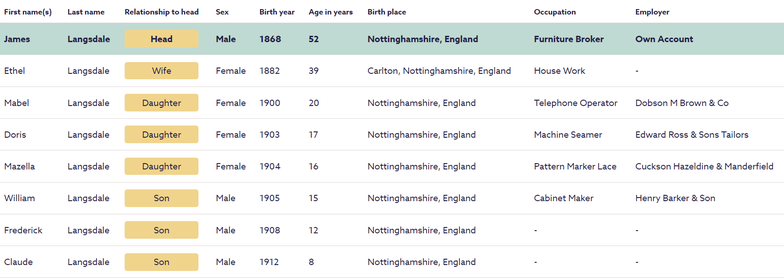The residential area of Mapperley is made extra special because of the variety of houses that were built over time, as plots of land became available. This haphazard way the area has developed, has given us a wide variety of dwellings, some modest and some that make you stop and stare.
Up to the Edwardian period, houses were identifiable by a name rather than a number. Some of these names have survived in the stone above the entrance door.
‘Clina House’ on Morley Road off Porchester Road is a fine example. It is almost certainly an Edwardian property. During this period from 1901, suburban houses were built on wide plots with fewer, larger rooms, double-aspect living spaces and large hallways. Privacy was also important.
Where did the unusual name Clina come from?
The answer is, we don’t know.
Clina is a word from the Spanish region of Asturia, meaning a mane, which is not likely to be the origin of the name Clina House. Clina is also a family name that appears in the USA, Canada and Scotland.
When we posted about the name Clina House, several people thought the name may have actually been Olina, but one reader (with access to census records) gave us some useful information.

Who lived there?
We do know the answer to that.
The census records of 1911, 1921 and 1939 gave us an insight into the families that lived there a century ago. Unsurprisingly, many worked in the lace and cycle industry.
In 1911 the Stanley family lived at Clina House.
Originally from Ashby de la Zouch in Leicestershire, Henry Stanley described himself as a cycle engineer, probably drawn to Nottingham by the opportunities at Raleigh.

Henry Stanley may even have been the first occupant.
In 1921 the Langsdale family were residing at Clina House.
They had six children, four of them of working age. In this census record, their employers are also recorded.

James Langsdale (52yrs) and his wife Ethel (39yrs). James was a self employed as a Furniture Broker and his wife kept the house. Their four daughters worked for different lace manufacturers.
Mabel was a telephone operator at Dobson Browne & Co Ltd, a Nottingham Lace Manufacturer.

Dobson Browne gained prominence in the 1940s when they produced this large panel of curtain lace as a commemoration of the Battle of Britain, the first major military campaign to involve just air forces.
The design, from photographs, took two years to create and making the jacquard pattern cards took another 15 months.
At that time the company address was Del Beta House on Queens Road in Nottingham.
Maybe Mabel was still with the company during the war years?
Photo credit Nottingham City Museums
Doris Langsdale was 17 years old and employed as a machine seamer with Edward Ross & Sons Tailors. The company was registered as a Plain Hosiery Manufacturer and located on Platt Street. Platt Street no longer exists but was a historic old street in the Hockley, Goose Gate, and Coalpit Lane area.
Platt Street was originally an ancient north road constructed to pass the east side of Nottingham on St. Mary’s Hill, and its line is continued by Huntingdon Street. The land between Platt Street and the now vanished Beck stream, used to be called the Meadow Platts or Bottoms, because of their lowly situation. Leading from the end of Platt Street was Cur Lane, which in turn leads to Coalpit Lane.
Mazella Langsdale was 16 years old and worked as a Pattern Marker at a lace manufacturer named Cuckson Hazeldine & Manderfield. Their warehouse was the impressive building on Stoney Street at the junction with Barker Gate.

The Barker Gate warehouse was built by Watson Fothergill in 1897, it still stands today. Photo credit Watson Fothergill Walk
William Langsdale was 15 years old and employed as a cabinet maker, taking his father’s connections to the industry maybe? His employer was recorded as Henry Barker and Son.
In 1939 the Smith family were living at Clina House.
The 1939 census was different in that it was brought about 2 years early due to the outbreak of war. It was taken on 29th September that year and used to produce identity cards and to help with conscription. It also helped to assist in monitoring the mobilisation of the military and evacuations.

Ernest and Mary Smith has one son Sydney living with them in 1939. Ernest was 65 in 1939 and described himself as a manufacturer of Ladies Rubber Underwear. Sydney also worked for the un-named company as being in charge of the machines.
Wouldn’t it be great to know more about these families?

